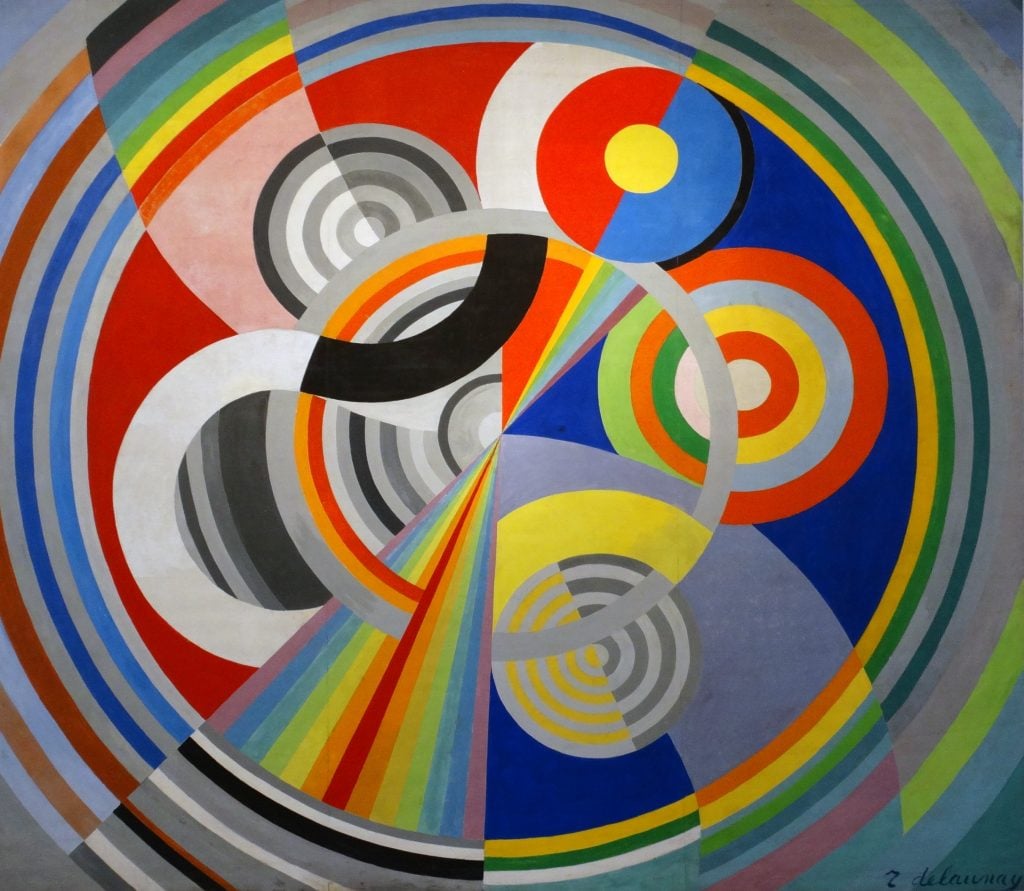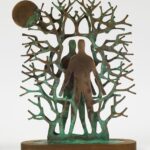Like many art movements—among them Impressionism, Fauvism, and Cubism—Orphism wasn’t named by the artists creating the work, but rather by a critic. The poet Guillaume Apollinaire first saw Robert Delaunay’s canvases in 1912 and likened them to the ancient Greek hero Orpheus, who was known for his poetry and music, which was so beautiful it could cast a spell upon listeners.
In the ancient myth, Orpheus is said to have used his music to make his way to the underworld to retrieve his wife, Eurydice, who had died. His followers, Orphists, saw music as a portal to the underworld. For Apollinaire, the work of Delaunay and his wife, Sonia Terk, had a similar otherworldly power with a distinctively musical quality to it.
At the 1912 Salon de la Section d’Or, the poet waxed lyrical about the Orphism, dubbing it “the art of painting new totalities with elements that the artist does not take from visual reality, but creates entirely by himself.” His definition would inaugurate a whole art form—anchored by a radical artistic couple. Below, we revisit Orphism’s origins and impact, tracing how an offshoot of Cubism is still remembered for its modernist approach to color and geometry.
Who were the artists behind Orphism?
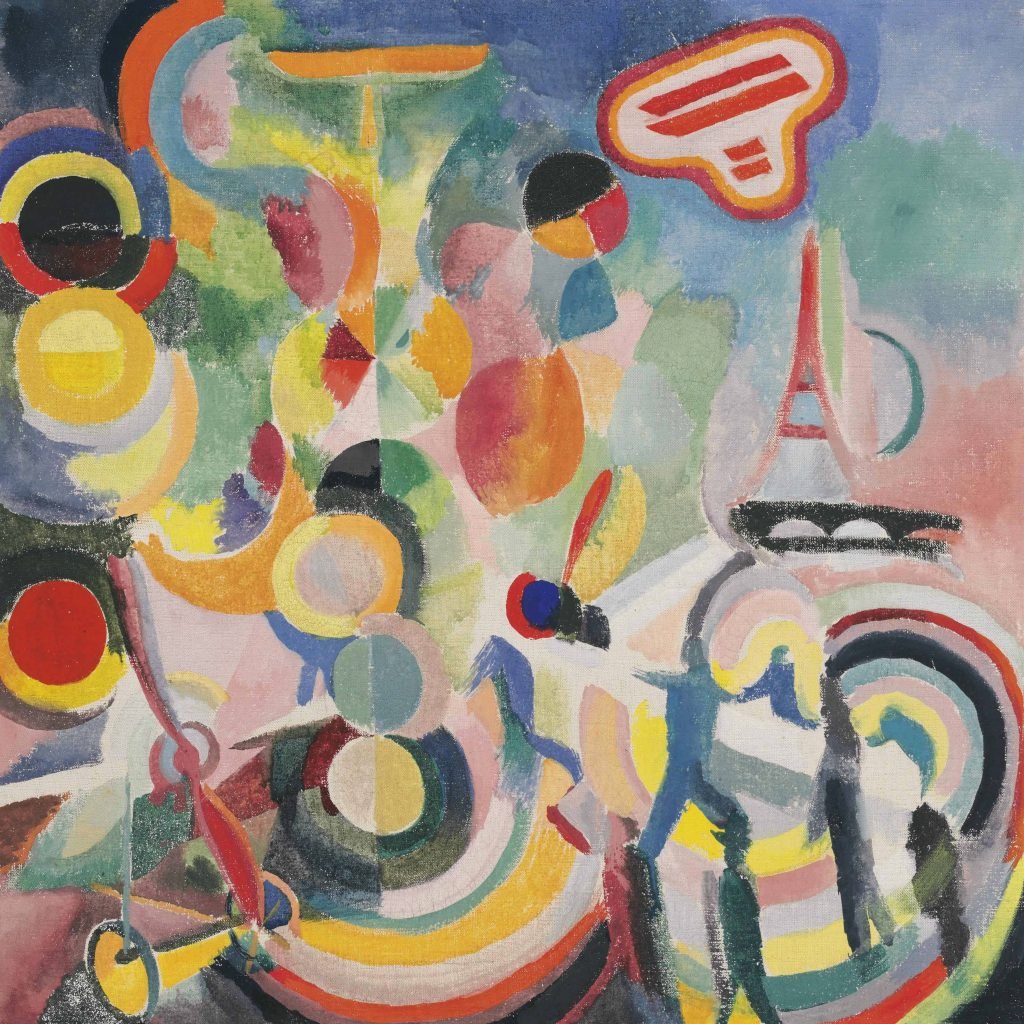
Robert Delaunay, Homage to Blériot (study) (1914). Photo: Fine Art Images/Heritage Images via Getty Images.
Sonia Terk and Robert Delaunay met in Paris in the first decade of the 1900s. She was a student at the Académie de La Palette; he was a young working artist. The pair married in 1911.
Together, the couple developed Orphism, a style noted for its planes of flat color, concentric circles, and abstract curves. Identifiable forms were eroded away either partially or entirely in their compositions, with the artists instead focusing on the harmony and balance between colors and shapes. The hues selected by the artists were put together in combinations that were likened to notes being combined to form musical chords.
What were Orphism’s roots?
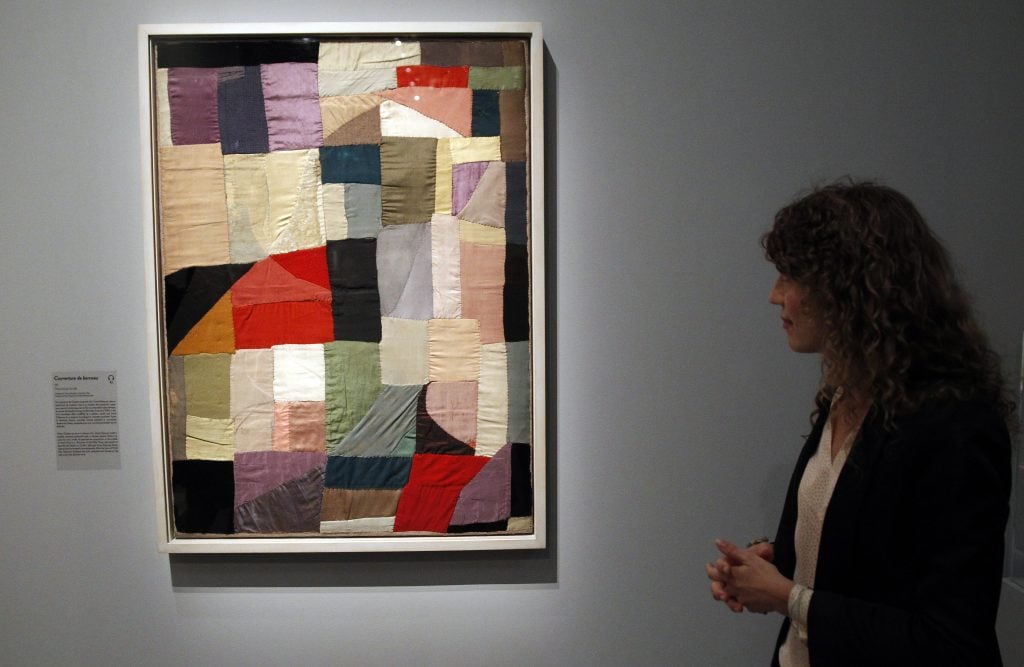
A visitor looks at an artwork, Couverture de berceau (1911), by French artist Sonia Delaunay at Museum of Modern Art (MAM) in Paris, France, 2014. Photo: Chesnot/Getty Images.
Although its stylistic roots are in Cubism—which had been developed by Pablo Picasso and Georges Braque in 1907, doing away with traditional representation—Orphism can be said to have had a more domestic start. In 1911, Sonia made a patchwork quilt for her and Robert’s infant son, Charles. The blanket was made from 70 triangular and rectangular pieces of cloth, and was inspired by those she had seen “in the houses of Russian peasants”. The quilt demonstrated Sonia’s fascination with color and pattern, and she had it framed and exhibited under the title Couverture de Berceau (1911).
Both of the Delaunays were fascinated by color theory, and Robert was particularly interested in the work of the French chemist Eugène Chevreul, who explored the effects of contrasting colors in the eye. This would echo in Apollinaire’s later urging that an Orphist’s paintings “should convey an ‘untroubled aesthetic pleasure,’ a meaningful structure and sublime significance.”
What were some key Orphist works?
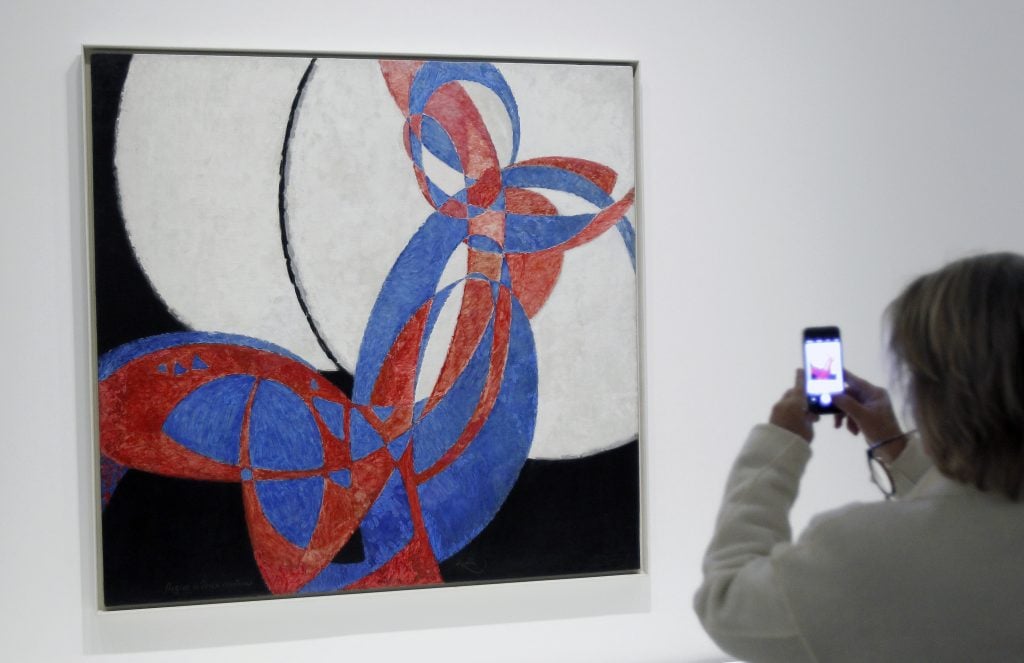
František Kupka, Amorpha, fugue in two colors (1912), on view at the Louis Vuitton Foundation in Paris, France, 2015. Photo: chesnot/Corbis via Getty Images.
Today, Orphism is remembered in artworks including Sonia’s Prismes électriques (1914), held in the Pompidou Centre in Paris, and Robert’s Homage to Biérot (1914), one version of which is held in the Museum of Grenoble, and the other at the Kunstmuseum Basel.
Czech artist František Kupka also reflected the movement in the style and title of paintings such as Amorpha, Fugue en deux couleurs (1912). Canvases by Wassily Kandinsky such as Composition IV would also be considered Orphist works; the artist was long fascinated by the relationship between visual art and music, once stressing: “Form itself, even if completely abstract has its own inner sound.”
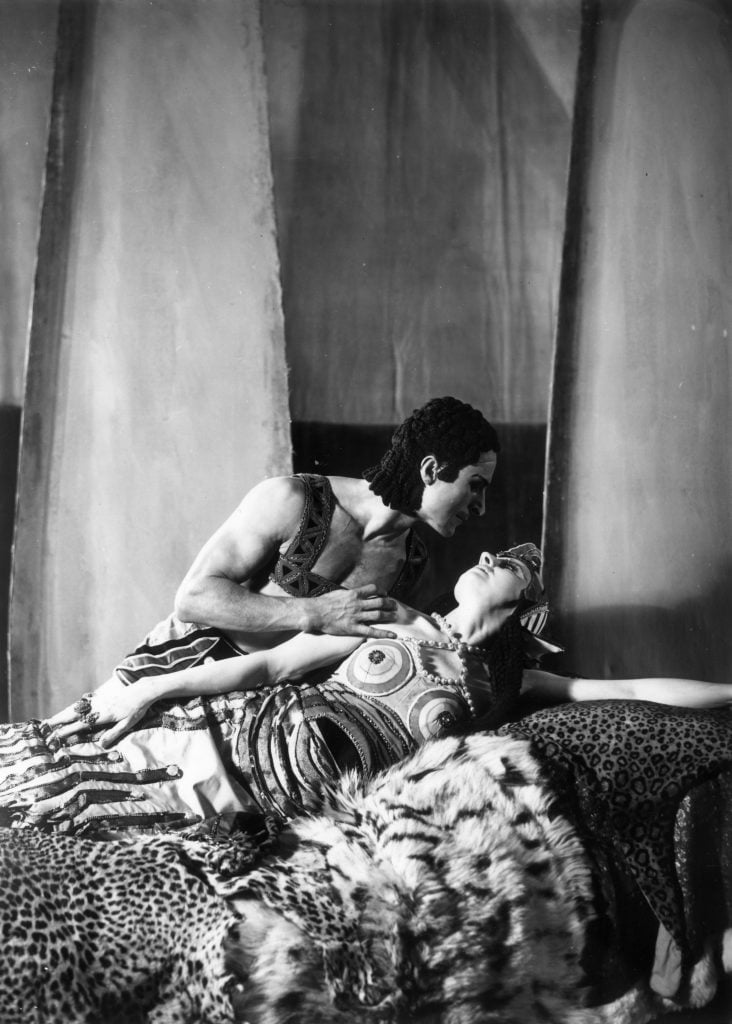
Circa 1927: Lubov Tchernicheva and Yurek Shabelevsky in the De Basil Company’s ballet, ‘Cleopatra’. Costumes by Sonia Delaunay, decor Robert Delauney. Photo: Baron/Hulton Archive/Getty Images.
The Delaunay’s Orphist designs also moved from the canvas onto the stage when the Delaunays were commissioned to work on Sergei Dighilev’s 1917 production of the ballet Cleopatra, with Robert creating the sets for the show, and Sonia designing costumes for the dancers featuring geometric patterns and vivid colors.
Why are we still talking about Orphism?
In 1936, the curator and art historian Alfred Barr created his famous diagram which charted how each of the art movements since the 1890s had evolved from and inspired one another. In a damning blow, Orphism was the only movement which Barr deemed not to have inspired any other movement. However, Orphism is known to have influenced the Op artists of the 1960s, including Bridget Riley.
Orphism has been seen as a difficult movement to place in the history of Western art, too, because its artists remained a small group, who practiced the style for only three short years before the outbreak of World War I. Apollinaire’s split with Robert Delaunay after 1912 also saw the critic distance himself from Orphism in favor of Futurism.
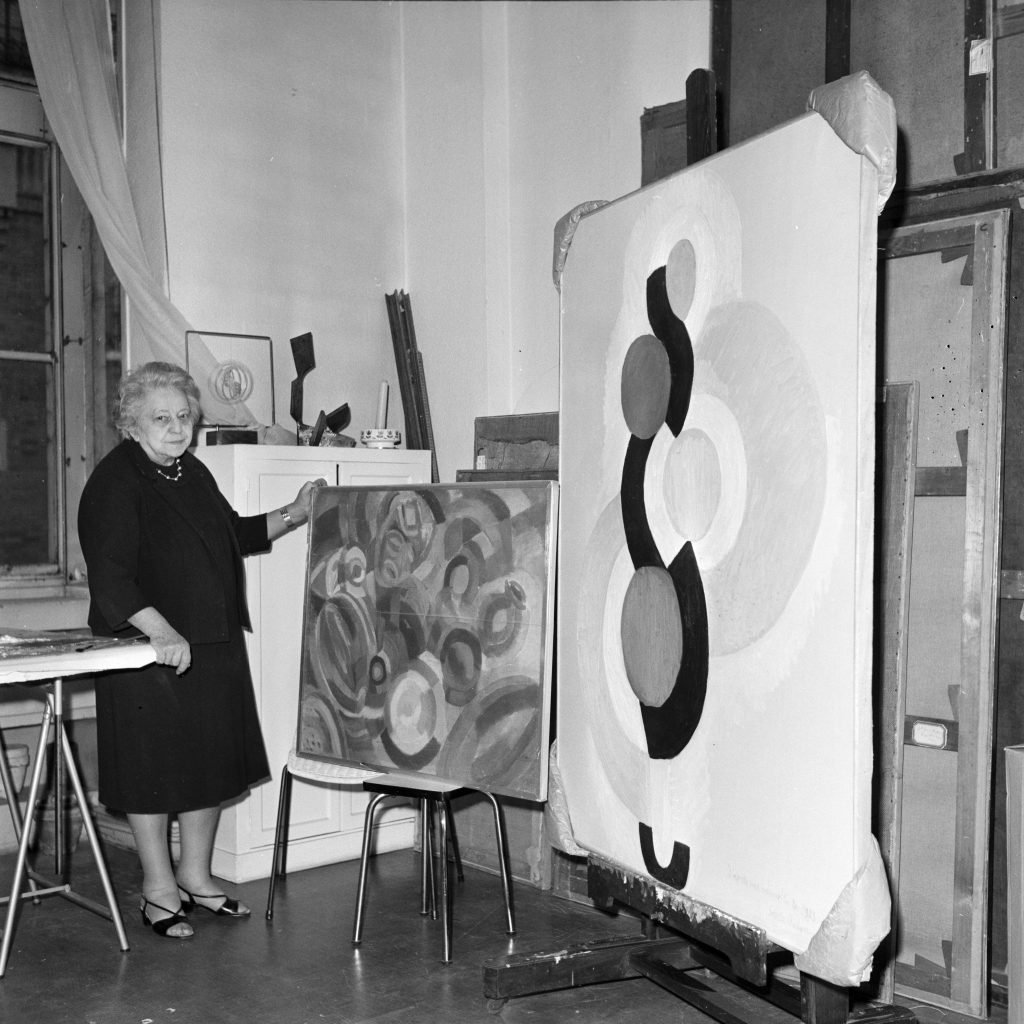
Sonia Delaunay posing in front of her paintings in her studio. Photo: Keystone-France/Gamma-Rapho via Getty Images.
After the war, while Delaunay’s students such as Henry Bruce sought to create art in the spirit of Orphism, the movement’s central couple evolved beyond it, inspired by emerging forms including Dada and Surrealism. Robert’s canvases grew more abstract, even if they still boasted an Orphic kineticism. Sonia, following her husband’s death in 1941, vastly expanded her practice, her vivid geometry covering mediums from textiles and stage sets to cars and tableware. She maintained a love for color and lyrical abstraction to the end.
“One who knows how to appreciate color relationships, the influence of one color with another, their contrasts and dissonances,” she once said, “is promised an infinite variety of images.”
For as long as there has been art, revolutionary movements have continually reshaped its creation and perception. Artcore unpacks the trends that have shaken up today‘s and yesterday‘s art world—from the elegance of 18th-century Neoclassicism to the bold provocations of the 1990s Young British Artists.
Follow Artnet News on Facebook:
References: this article is based on content originally published by on Artnet. You can read the full article here.
